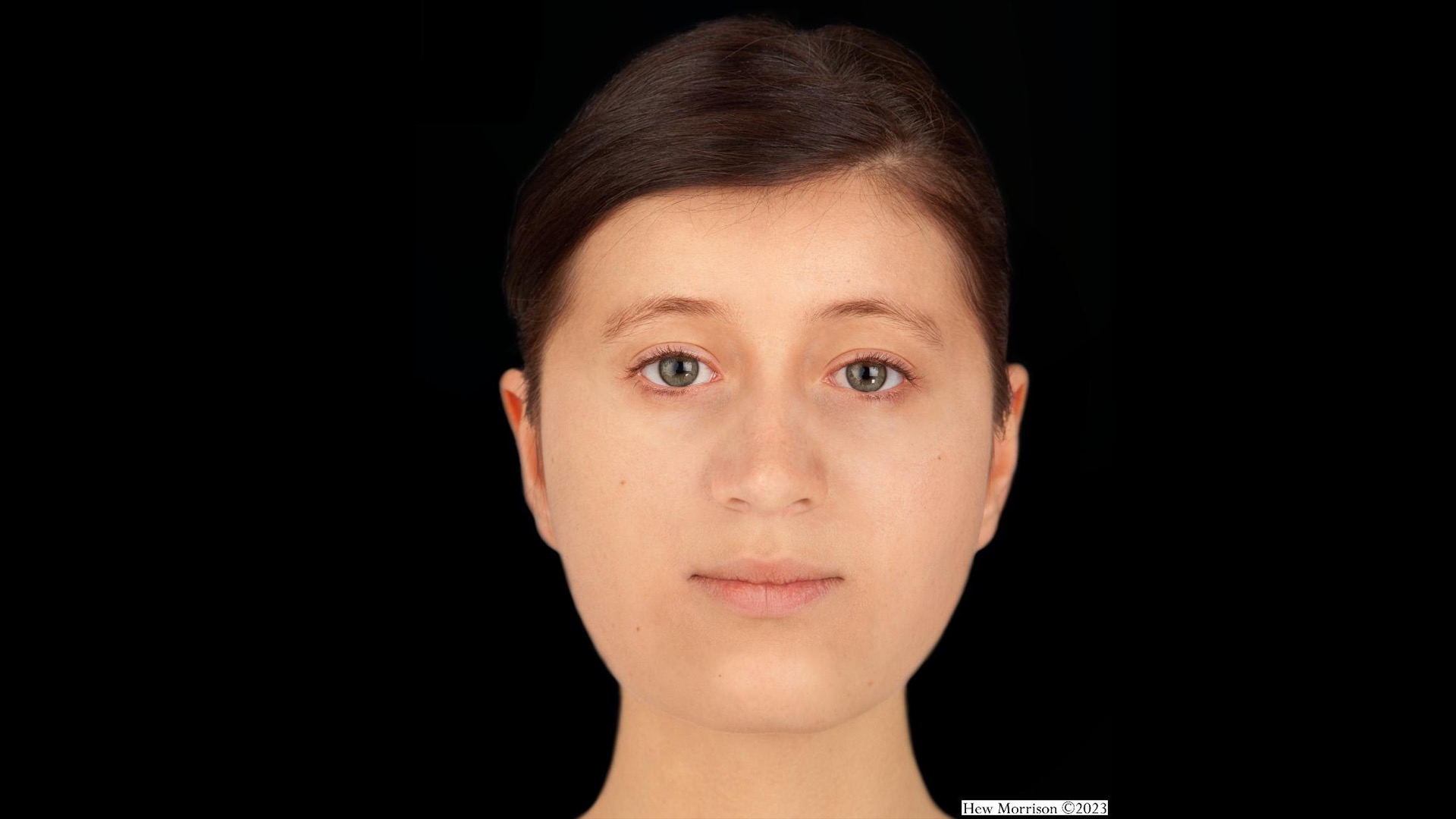Face of 'elite' 7th-century girl buried in a bed with gold and jewels revealed after 1,300 years
A forensic artist has created a facial reconstruction of a 16-year-old girl who was wearing an ornate gold cross and buried in a bed 1,300 years ago.

In 2011, archaeologists in England unearthed the skeletal remains of a teenage girl lying on a carved wooden bed and wearing a gold cross studded with rubies, a treasure they dubbed the Trumpington Cross. Little was known about the Anglo-Saxon girl, other than she was 16 years old when she died near the end of the seventh century and, based on her ornate grave goods, was likely an early convert to Christianity.
Now, a new facial reconstruction of the teen, whose tomb has come to be known as the Trumpington Cross burial, offers insight into what she may have looked like. Both the reconstruction and the gold cross are currently on display at the University of Cambridge's Museum of Archaeology and Anthropology as part of a free exhibition called "Beneath Our Feet."
To create the girl's likeness, Hew Morrison, a Scottish forensic artist, used a high-resolution photograph of the skull, as well as close-up photographs, to study its surface more closely. He also used tissue-depth data for Caucasian women as he created the final image, according to a statement from the University of Cambridge.
"This helped me work out where the individual facial muscle attachments are [since] we all have striations on the skull surface to which these muscles attach," Morrison told Live Science in an email. "Considering the age of the skull, it was in remarkable condition. The right side of the temporal area of the cranium was slightly damaged, but this did not have any negative bearing on my ability to create the facial reconstruction."
As Morrison created the facial approximation, he noticed one unique facial characteristic take form where the girl's eyes would have been.
Related: 31 amazing facial reconstructions, from Stone Age shamans to King Tut's father
"The left orbit [eye socket] sat slightly lower than the right side; thus, her left eye sat about 5mm [0.2 inch] lower than the right side," Morrison said. "This would have been noticeable in life."
Get the world’s most fascinating discoveries delivered straight to your inbox.
In addition, scientists from the University of Cambridge conducted an isotopic analysis of the teen's bones and teeth, revealing that she moved to England from somewhere in the German Alps when she was around 7 years old. The analysis also revealed that "the proportion of protein in her diet decreased by a small but significant amount" when she arrived in England, according to the statement.
"She was probably quite unwell and she travelled a long way to somewhere completely unfamiliar — even the food was different," Sam Leggett, one of the scientists who conducted the analysis and now a research fellow at the University of Edinburgh, said in the statement. "It must have been scary."
The teen's burial is one of 72 similar medieval bed burials discovered by archaeologists throughout Europe. Of the 18 bed burials found in England, all had one thing in common: They contained female remains. This is likely due to bed burials being a burial rite largely imported by women as they migrated throughout Europe during Christianity's expansion.
"She must have known that she was important, and she had to carry that on her shoulders," Leggett said. Because the results of her isotopic analysis match those of two other women with similar bed burials from this period in the same region, she may have belonged to an elite female group who traveled from mainland Europe in the seventh century, Leggett added.
However, much about this group remains a mystery. "Were they political brides or perhaps brides of Christ?" Leggett said. "The fact that her diet changed once she arrived in England suggests that her lifestyle may have changed quite significantly."
Researchers have not uncovered the teen's cause of death, according to the statement.
The "Beneath Our Feet" exhibition continues through April 14, 2024.
Jennifer Nalewicki is former Live Science staff writer and Salt Lake City-based journalist whose work has been featured in The New York Times, Smithsonian Magazine, Scientific American, Popular Mechanics and more. She covers several science topics from planet Earth to paleontology and archaeology to health and culture. Prior to freelancing, Jennifer held an Editor role at Time Inc. Jennifer has a bachelor's degree in Journalism from The University of Texas at Austin.



